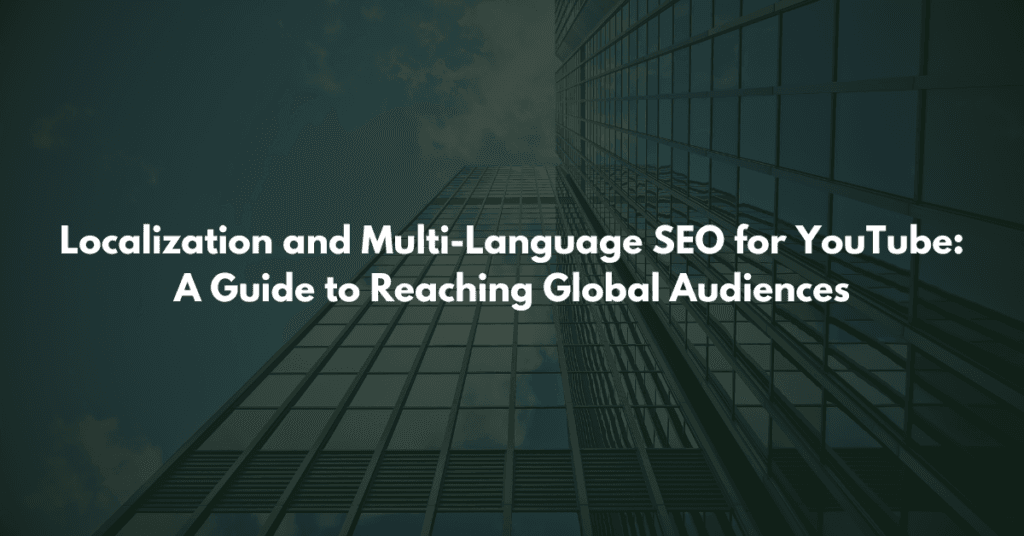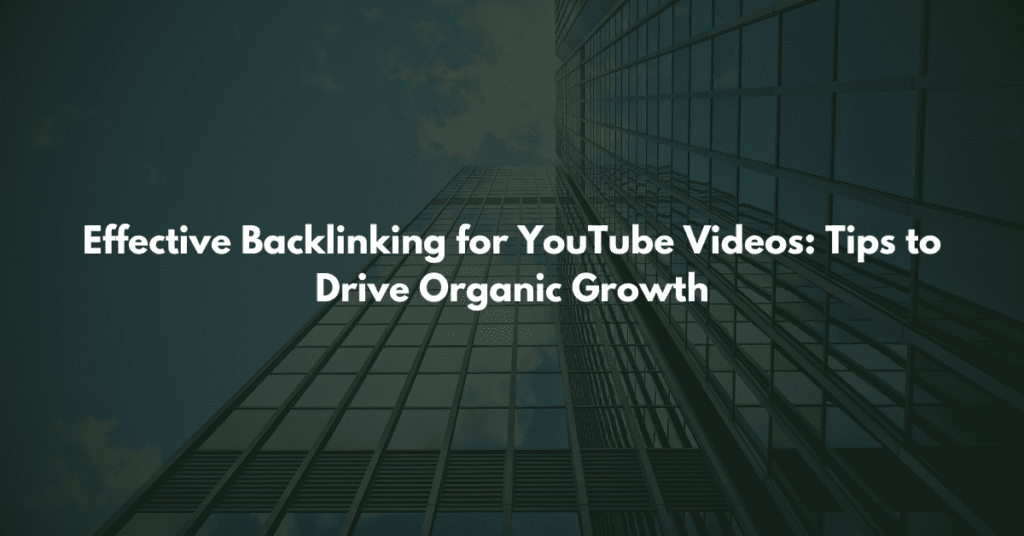YouTube is a global platform, with billions of users speaking a wide array of languages. To truly tap into the potential of a global audience, YouTube creators must embrace localization and multi-language SEO strategies. By tailoring your content and metadata for different languages and cultures, you not only increase visibility but also create a more personalized and engaging viewer experience. In this guide, we’ll dive into the best practices for localization, adding subtitles, translating video content, and optimizing your YouTube channel for global reach.
What is Localization and Multi-Language SEO for YouTube?
Localization for YouTube goes beyond simply translating your video’s language. It involves adapting your content to fit the cultural, linguistic, and technical preferences of a target audience. Multi-language SEO, on the other hand, is about ensuring your videos appear in search results across different languages, helping you reach a more diverse audience.
Localization and multi-language SEO are essential because they allow creators to tap into non-English speaking markets, vastly expanding their reach. By tailoring your content to local preferences, you improve engagement, watch time, and overall channel growth.
The Impact of Localization on YouTube Growth
How Localization Expands Audience Reach
Localization offers creators the opportunity to engage audiences in various regions and languages. YouTube’s algorithm takes into account watch time and viewer retention, and localized content can significantly boost both. By offering subtitles, translating video descriptions, and creating region-specific content, you increase your chances of being discovered by international viewers.
Localized content not only brings in new viewers but also builds a loyal community by addressing cultural nuances that resonate with specific regions.
Improved Viewer Experience Through Localization
When viewers encounter content that speaks to their language and culture, they are more likely to engage. Localized content feels more relevant and authentic, leading to longer viewing times and higher engagement metrics. By tailoring your content to different audiences, you also reduce bounce rates and improve retention.
Adding Subtitles and Translations for Localization
Why Subtitles Are Key for Multi-Language SEO
Subtitles play a critical role in multi-language SEO because they make videos more accessible and searchable. YouTube’s algorithm can index the text from subtitles, which means your video has a better chance of showing up in search results when people search for related terms in different languages. Subtitles also enhance the viewer experience by breaking down language barriers, which can increase the likelihood of a viewer watching the entire video.
How to Add Subtitles on YouTube
YouTube makes it easy to add subtitles to your videos, either manually or automatically. To manually add subtitles:
- Navigate to YouTube Studio and select your video.
- Under the Subtitles tab, click on Add Language and choose the language.
- You can either upload a subtitle file or manually input text to match your video.
YouTube also offers an automatic subtitle feature, but for higher accuracy, it’s advisable to use professional translation services or tools like Rev or Amara.
Translating Video Titles, Descriptions, and Tags
To maximize the visibility of your videos in non-English speaking regions, translating your titles, descriptions, and tags is crucial. Start by researching keywords in your target language and region. Tools like Google Keyword Planner and Ahrefs can help you find popular search terms for each language. Once you have your keywords, update your metadata to reflect them in the appropriate language.
Multi-Language Playlists and Channels
Organizing Content by Language
Creating playlists for each language ensures that viewers can easily find content that’s relevant to them. For instance, if you produce content in both English and Spanish, having two separate playlists will allow Spanish-speaking users to access all your Spanish videos in one place. This organization improves the user experience and boosts your channel’s SEO by aligning with YouTube’s algorithm.
Deciding Whether to Create Separate Channels for Different Languages
While some creators prefer to keep all their content in one channel, others may opt to create multiple channels for different languages. This approach can be beneficial if your content significantly varies by language or culture. However, managing multiple channels can be time-consuming, and it may dilute your focus. You’ll need to weigh the benefits of a global channel against the efficiency of localizing within a single channel.
Best Practices for Multi-Language SEO on YouTube
Identify Target Languages and Regions
Before diving into localization, it’s important to understand where your potential viewers are. Use YouTube Analytics to identify the geographical regions where your videos are being watched. From there, you can prioritize languages based on audience demand. YouTube Analytics offers insights into viewer demographics and locations, allowing you to tailor your content accordingly.
Use Local Keywords for Better Search Performance
Keyword research is essential for multi-language SEO. Use local tools like SEMrush, Google Keyword Planner, and Ahrefs to discover high-performing search terms in your target regions. Incorporate these keywords into your titles, descriptions, tags, and subtitles to help your videos rank better in local searches.
Optimizing Thumbnails with Localized Text
Thumbnails are one of the first things viewers notice, so adding localized text or imagery can make your videos more appealing to specific audiences. For example, if you’re targeting a French audience, a thumbnail with French text or cultural references will help draw more viewers from that region. Ensure that the text is clear and relevant to the local context.
Tools to Help with Localization and Multi-Language SEO
YouTube Studio for Subtitles and Translations
YouTube Studio is the primary platform for managing your videos, and it provides several tools for adding and editing subtitles and translations. You can manually upload subtitle files or use auto-generated captions as a base and improve them for accuracy.
Translation Platforms (e.g., DeepL, Google Translate)
For accurate translations, it’s best to use professional services or advanced translation tools like DeepL or Google Translate. While Google Translate is a quick solution, DeepL offers more accurate translations for a variety of languages, especially for nuanced or industry-specific terms.
Keyword Research Tools for Local SEO
Keyword research tools like Ahrefs and SEMrush allow you to perform keyword research in multiple languages. These tools also help identify local search trends and search volume, ensuring that your content is optimized for maximum discoverability across different regions.
Challenges and Solutions in Localization for YouTube
While localization offers immense growth potential, it comes with its own set of challenges. One of the most common issues is inaccurate translations that fail to resonate with the target audience. To avoid this, work with professional translators or use advanced tools that provide context-specific translations.
Another challenge is managing multiple languages and regions within a single channel. However, by utilizing playlists, optimizing metadata, and creating segmented content, you can manage the workload and maintain a unified channel.
Conclusion
Localization and multi-language SEO are essential for YouTube creators looking to expand their reach and tap into global audiences. By adding subtitles, translating metadata, and optimizing for local search, you can boost your content’s visibility, increase engagement, and ultimately grow your YouTube channel. With the right strategies and tools, you can create content that resonates across borders and cultures, driving success on a global scale.
FAQs
1. How do I choose which languages to localize my YouTube videos into?
Start by analyzing your YouTube Analytics to identify where your viewers are coming from. Focus on languages with the highest viewership.
2. Does localization improve video rankings in search results?
Yes, localized content improves your chances of ranking in local search results, increasing discoverability.
3. What tools are best for translating YouTube metadata?
DeepL and Google Translate are excellent for translations, but professional services may provide the best accuracy for important content.
4. Should I use auto-translated subtitles or hire professional translators?
While auto-translated subtitles can be convenient, professional translators provide higher accuracy, especially for technical or culturally specific content.
5. What is the ROI of localization for YouTube channels?
Localization can significantly increase your views, engagement, and subscriber base, making it a high-return strategy for global growth.


